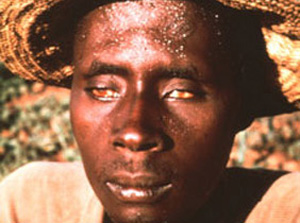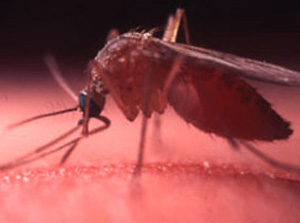Parasitic Infections in Humans
What is a Parasitic Infection?
Many devastating diseases in tropical areas of the world are the result of infection with parasites. In these regions, the combination of climate and poverty contribute to the transmission of parasitic infections. Some parasites, like malaria, are a common cause of death, while others, like parasitic nematodes can lead to disfigurement, blindness and severe economic hardship. A recent World Health Organization (WHO) report on the leading causes of death world-wide shows that one-third of all deaths are due to infectious and parasitic diseases. It is estimated that about 1.5–2.7 million people die from malaria each year which is about the same that die from HIV/AIDS (World Health Report 1998, WHO).
Rise of Parasitic Infections
In many tropical and subtropical areas, the prevalence of parasitic infections is on the rise due to rapid and unplanned growth of cities, which creates additional breeding sites for the mosquitoes that transmit the parasites responsible for malaria and filariasis. Effective control of these diseases requires repeated administration of potent drugs and continuous efforts to reduce vector insect populations.
Most Common Types of Parasitic Infection in Humans
Malaria
Malaria is probably the most prevalent and debilitating parasitic disease afflicting humans. It is normally caused by one of four species of Plasmodium. Infection with Entamoeba histolytica, resulting in amoebic colitis and liver abscesses, is the second leading cause of death resulting from a parasitic infection. E. histolytica is estimated to infect one tenth of the worlds' population or 500 million people (WHO Weekly Epidemiologic Record [1997] 72, 97–100).
Filariasis
Filariasis is caused by several different species of parasitic nematodes that are transmitted to humans by a variety of insect vectors. Collectively, the various species of filarial parasites are estimated to infect approximately 150 million people worldwide, and over 1 billion people live in areas where filariasis is common (WHO [2000] Fact Sheets 102, 95). While filarial infection is rarely life-threatening, it causes chronic suffering, social stigma and disability. The degree of disability resulting from infection greatly hinders the ability to work and the economic impact of this disease is considerable.
Brugia malayi
Brugia malayi is a filarial nematode with widespread distribution in South and South East Asia. It is transmitted via the bite of blood-feeding mosquitoes. The parasite resides in the lymphatic system and is a cause of lymphatic filariasis. In the later stages of infection, the disease is characterized by a disfiguring condition known as elephantiasis.
Onchocerca volvulus
Onchocerca volvulus is the causative agent of River Blindness and the second leading cause of blindness worldwide. This filarial parasite is transmitted by female blackflies that breed in fast flowing rivers. Over 20 million people are infected world-wide although approximately 99% of cases are found in Africa (WHO [2000] Fact Sheet 95).
Currently available anti-parasitic drugs have their limitations and there is a need to focus on the discovery of new drugs to ameliorate the conditions associated with the various diseases and to control the parasites responsible.
NEB’s Parasitology Research
For more than 20 years, NEB has supported basic research in molecular parasitology. It is hoped that this research may contribute towards the development of technologies that can control filarial parasites and therefore improve the quality of life in areas where filarial infections are endemic. The parasitology group at NEB has been working, in collaboration with a number of scientists from various universities and institutions, to discover new potential targets for anti-parasite chemotherapy. Several molecular targets are now available to the scientific community for further investigation, including peptidyl-prolyl cis-trans isomerases (PPIases), chitinases and proteases.
WHO (World Health Organization) TDR (United Nations Development Program/ World Bank/WHO Special Program for Research and Training in Tropical Diseases) LSTM (Liverpool School of Tropical Medicine)




